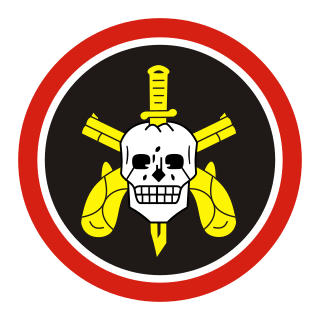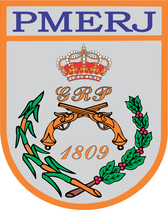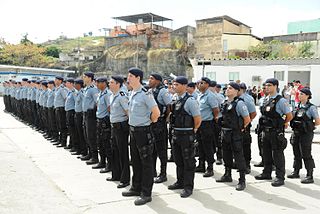
Favela is an umbrella name for several types of working-class neighborhoods in Brazil. The term, which means slum or ghetto, was first used in the Slum of Providência in the center of Rio de Janeiro in the late 19th century, which was built by soldiers who had lived under the favela trees in Bahia and had nowhere to live following the Canudos War. Some of the last settlements were called bairros africanos. Over the years, many former enslaved Africans moved in. Even before the first favela came into being, poor citizens were pushed away from the city and forced to live in the far suburbs.

Rocinha is the second largest favela in Brazil, located in Rio de Janeiro's South Zone between the districts of São Conrado and Gávea. Rocinha is built on a steep hillside overlooking Rio de Janeiro, and is located about one kilometre from a nearby beach. Most of the favela is on a very steep hill, with many trees surrounding it. Around 200,000 people live in Rocinha, making it the most populous favela in Brazil.
Erismar Rodrigues Moreira, also known as "Bem-Te-Vi", was a gang leader in the Brazilian slum Rocinha, in Rio de Janeiro. He was considered to be the most wanted criminal in Rio during his prime.

In Brazil, the Federal Constitution establishes eight law enforcement institutions - seven titulars and one auxiliar. The titular institutions are: the Federal Police, the Federal Highway Police, the Federal Railroad Police, the Federal Penal Police, the State Military Police and Fire Brigade, the State Civil Police and the State Penal Police. Of these, the first four are affiliated to federal authorities and the latter three are subordinated to state governments. These public safety institutions are part of the Executive branch of either federal or state government. Apart from these eight institutions, there are others which affiliate to municipal authorities: the Municipal Guards. According to Minister Alexandre de Moraes of the Supreme Federal Court, "...the Municipal Guards are inserted in public safety as the auxiliary and related body of public security force..." Federal law 13,022 gave them de facto and de jure police attributions.

Comando Vermelho, also known as CV, is a Brazilian criminal organization engaged primarily in drug trafficking, arms trafficking, protection racketeering, kidnapping-for-ransom, hijacking of armored trucks, loansharking, irregular warfare, narco-terrorism, and turf wars against rival criminal organizations, such as Primeiro Comando da Capital and Terceiro Comando Puro. The gang formed in 1979 out of a prison alliance between common criminals and leftist guerrillas who were imprisoned together at Cândido Mendes, a maximum-security prison on the island of Ilha Grande. The prisoners formed the alliance to protect themselves from prison violence and guard-inflicted brutality; as the group coalesced, the common criminals were infused with leftist social justice ideals by the guerrillas. In 1979, prison officials labeled the alliance "Comando Vermelho", a name which the prisoners eventually co-opted as their own. In the 1980s, the gang expanded beyond Ilha Grande into other prisons and the favelas of Rio de Janeiro, and became involved in the rapidly growing cocaine industry. Meanwhile, Brazil's shift towards democracy and the eventual end of the military dictatorship in 1985 allowed the leftist guerrillas to re-enter society; thus, the CV largely abandoned its left-wing ideology.
Amigos dos Amigos is a criminal organization that operates in the Brazilian city of Rio de Janeiro. It was started up in 1998 when a member of Comando Vermelho was expelled from the organization for ordering the murder of another member. The gang's main rivals are Comando Vermelho and Terceiro Comando Puro. ADA controls many drug selling points in the North and West zones.
Proibidão, which literally translates to "strongly prohibited", is a subgenre of funk carioca music originating from the favelas of Rio de Janeiro where it began in the early 1990s as a parallel phenomenon to the growth of drug gangs in the many slums of the city. The drug gangs sponsored DJs and baile funks in the favelas they controlled to spread respect and love for their gang as well as hate to the other gangs. The music that resulted is proibidão.

Batalhão de Operações Policiais Especiais (BOPE) or BOPE is the police tactical unit and gendarmerie of the Military Police of Rio de Janeiro State (PMERJ) in Brazil. Due to the nature of crime in favelas, BOPE units utilize equipment deemed more powerful than traditional civilian law enforcement, and have extensive experience in urban warfare as well as progression in confined and restricted environments.

Complexo do Alemão is a group of favelas in the North Zone of Rio de Janeiro, Brazil.

Crime in Brazil involves an elevated incidence of violent and non-violent crimes. Brazil's homicide rate was 21.26 per 100,000 inhabitants in 2021, according to the United Nations Office on Drugs and Crime (UNODC). In absolute terms, Brazil has the highest number of intentional homicides in the world with 57,358 in 2018, but adjusted for population, Brazil is in 18th place. In recent years, the homicide rate in Brazil has begun to decline. The homicide rate was 20.89 per 100,000 in 2019 with 43,073 killings, down from 30.59 per 100,000 with 63.788 killings in 2017. Some states had lower than a 10.0 homicide rate such as São Paulo with 8.4 and Santa Catarina 9.1 per 100.000.

Vidigal is a neighborhood and a favela in Rio de Janeiro, Brazil.

The Morro da Babilônia is a hill in the Leme neighbourhood of Rio de Janeiro, separating Copacabana beach from Botafogo. It is home to a favela known by the same name, as well as the favela Chapéu Mangueira. Morro da Babilônia is an environmentally protected area.

The Military Police of Rio de Janeiro State (PMERJ) like other military polices in Brazil is a reserve and ancillary force of the Brazilian Army, and part of the System of Public Security and Brazilian Social Protection. Its members are called "state military" personnel.
Vigilante rap, also known as V-rap or rap das milícias is a musical style developed in Brazil and whose lyrics, as opposed to gangsta rap, are about praising vigilantism and violent acts against criminals instead of criminal enterprise or gangster life.

The Pacifying Police Unit, abbreviated UPP, is a law enforcement and social services program pioneered in the state of Rio de Janeiro, Brazil, which aims to reclaim territories, most commonly favelas, controlled by gangs of drug dealers. The program was created and implemented by State Public Security Secretary José Mariano Beltrame, with the backing of Rio Governor Sérgio Cabral. The stated goal of Rio's government is to install 40 UPPs by 2014. By May 2013, 231 favelas had come under the UPP umbrella. The UPP program scored initial success expelling gangs, and won broad praise. But the expensive initiative expanded too far, too fast into dozens of favelas as state finances cratered, causing a devastating backslide that enabled gangs to recover some of their lost grip.
On July 14, 2013, Amarildo de Souza, a 43-year-old bricklayer from the Rocinha favela in Rio de Janeiro, Brazil, was called in for questioning by Unidade de Polícia Pacificadora (UPP) officers on his way home from the market. Believed to be connected to drug trafficking activity in the favela despite having no prior involvement in illegal activity, de Souza was brought in for questioning during Operation Armed Peace, during which roughly 300 officers from Rocinha's UPP force flooded the favela in order to arrest drug traffickers. It was during this two-day long raid that de Souza was brought to the police station and never seen again.
Brazilian militias, mainly in Rio de Janeiro, and some other cities of Brazil, are illegal mafia-like paramilitary groups made up of current and former police officers as well as Military Firefighters Corps officers, criminals, politicians, and military officers, operating also as a regular mafia by trade extortion and political influence.

Elias Pereira da Silva, also known as Elias Maluco, was one of Rio de Janeiro's most powerful drug traffickers. Maluco, a member of the criminal faction Comando Vermelho, commanded drug trafficking in thirty slums near Complexo do Alemão and Penha, Brazil. He was accused of killing over sixty people.

The Vila Cruzeiro shootout took place on 24 May 2022 in the favela of the same name in Rio de Janeiro, during a joint operation by the Special Police Operations Battalion (BOPE), the Federal Police and the Federal Highway Police that resulted in at least 26 people killed by gunshots or cutting objects. It was the second most lethal police operation in the city of Rio de Janeiro, second only to the Chacina do Jacarezinho, which occurred a year earlier.

Ronnie Lessa, rarely and erroneously referred to as Rony or Roni Lessa, is a former military police officer from Rio de Janeiro, retired in 2010, mainly known for being one of the main suspects involved in the assassination of councilwoman Marielle Franco and driver Anderson Gomes, which occurred in Rio de Janeiro on March 14, 2018. He is also known for his connection with the militia in the state.















